Table of Contents
- 1 What is Generation Computer?
- 2 Classification of Computer by Generation
- 3 Generations of Computer First To Fifth
- 4 First Generation of Computer Vacuum Tubes (1943-1959)
- 5 Second Generation of Computer Transistors (1956-1963)
- 6 Third Generation of Computer Integrated Circuits (1964-1971)
- 7 Fourth Generation of Computer 1971 to Present
- 8 Fifth Generation of Computer Present and Beyond (Artificial Intelligence)
What is Generation Computer?
The history of computer development is often referred to in reference to the different generations of computing devices.
Each generation of computers is characterized by a major technological development that fundamentally changed the way computers operate, resulting in increasingly smaller, cheaper, more powerful, efficient, and reliable devices.

Table of Contents
There are five computer generations known to date. Each generation has been discussed in detail along with its time period and characteristics. In the following table, approximate dates against each generation have been mentioned, which are normally accepted.
Classification of Computer by Generation
Following are the main five classifications of computer by generation:
| S No. | Generation | Description |
| 1. | First Generation | The period of the first generation: 1946-1959. Vacuum tube-based. |
| 2. | Second Generation | The period of the second generation: 1959-1965. Transistor-based. |
| 3. | Third Generation | The period of the third generation: 1965-1971. Integrated Circuit based. |
| 4. | Fourth Generation | The period of fourth-generation: 1971-1980. VLSI microprocessor-based. |
| 5. | Fifth Generation | The period of fifth-generation: 1980-onwards. ULSI microprocessor-based. |
Generations of Computer First To Fifth
Computer generations are based on when major technological changes in computers occurred, like the use of vacuum tubes, transistors, and the microprocessor. As of 2018, there are five generations of the computer:
- First Generation of Computer (1943-1959)
- Second Generation of Computer Transistors (1956-1963)
- Third Generation of Computer Integrated Circuits (1964-1971)
- Fourth Generation of Computer 1971 to Present
- Fifth Generation of Computer Present and Beyond (Artificial Intelligence)
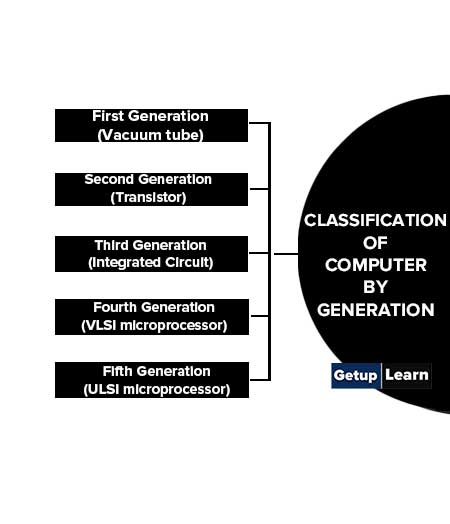
First Generation of Computer Vacuum Tubes (1943-1959)
In 1937 the first electronic digital computer was built by Dr. John V. Atanasoff and Clifford Berry. It was called the Atanasoff-Berry Computer (ABC). In 1943 an electronic computer name the Colossus was built for the military.
Other developments continued until 1946 the first general-purpose digital computer, the Electronic Numerical Integrator and Calculator (ENIAC) was built.
It is said that this computer weighed 30 tons, and had 18,000 vacuum tubes that were used for processing. When this computer was turned on for the first time lights dim in sections of Philadelphia. Computers of this generation could only perform a single task, and they had no operating system.
The first computers used vacuum tubes for circuitry and magnetic drums for memory, and were often enormous, taking up entire rooms. They were very expensive to operate and in addition to using a great deal of electricity, generated a lot of heat, which was often the cause of malfunctions.
First-generation computers relied on machine language to perform operations, and they could only solve one problem at a time. The input was based on punched cards and paper tape, and the output was displayed on printouts.
The UNIVAC and ENIAC computers are examples of first-generation computing devices. The UNIVAC was the first commercial computer delivered to a business client. It was used in the 1951U.S. Bureau Census.
Characteristics of First Generation Computer Vacuum Tubes
- Sizes of these computers were as large as the size of a room.
- Possession of Vacuum Tubes to perform calculation.
- They used an internally stored instruction called program.
- Use capacitors to store binary data and information.
- They use punched card for communication of input and output data and information.
- They generated a lot of heat.
- They have about One Thousand 1000 circuits per cubic foot.\
Features of First Generation Computers
- Vacuum tube technology.
- Unreliable.
- Supported machine language only.
- Very costly.
- Generates a lot of heat.
- Slow input and output devices.
- Huge size.
- Need of AC.
- Non-portable.
- Consumes lot of electricity.
Examples of First Generation Computer
-
Mark 1: It was between 1937-1944 that Howard Aiken, with the support of IBM, built the first automatic electro-mechanical computer capable of performing arithmetic and logical operations by a series of electrically driven mechanical relays and switches. This machine, named Mark-1 was very reliable and is regarded by some as the finished dream of Charles Babbage with respect to his Analytical Engine.
- Electronic Numerical Integrator and Calculator (ENIAC) built at the Moore School for Engineering of the University of Pennsylvania in 1946 by J. Presper Eckert and William Mauchly.
- Electronic Discrete Variable Automatic Computer (EDVAC) also developed in 1947 by Eckert and Mauchly.
Second Generation of Computer Transistors (1956-1963)
Transistors replaced vacuum tubes and ushered in the second generation of computers. The transistor was invented in 1947 but did not see widespread use in computers until the late 50s.
The transistor was a vast improvement over the vacuum tube, allowing computers to become smaller, faster, cheaper, more,energy-efficient and more reliable than their first-generation predecessors.
Second-generation computers still relied on punched cards for input and printouts for output. Second-generation computers moved from cryptic binary machine language to symbolic, or assembly, languages, which allowed programmers to specify instructions in words.
High-level programming languages were also being developed at this time, such as early versions of COBOL and FORTRAN.
These were also the first computers that stored their instructions in their memory, which moved from a magnetic drum to magnetic core technology. The first computers of this generation were developed for the atomic energy industry.
Characteristics of Second Generation Computer
- The computers were still large, but smaller than the first generation of computers.
- They use transistors in place of Vacuum Tubes to perform calculations.
- They were produced at a reduced cost compared to the first generation of computers.
- Possession of magnetic tapes for data storage.
- They were using punch cards as input and output of data and information. The use of the keyboard as an input device was also introduced.
- These computers were still generating a lot of heat in which an air conditioner is needed to maintain a cold temperature.
- They have about one thousand circuits per cubic foot.
Features of Second Generation Computers
- Use of transistors.
- Reliable in comparison to first-generation computers.
- Smaller size as compared to first-generation computers.
- Generates less heat as compared to first-generation computers.
- Consumed less electricity as compared to first-generation computers.
- Faster than first-generation computers.
- Still very costly.
- AC required.
- Supported machine and assembly languages.
Examples of Second Generation Computer:
-
IBM 1620 (International Business Machines): The IBM 1620 was launched by IBM on October 21, 1959, and marketed as an inexpensive scientific computer.
-
IBM 7094 (International Business Machines): The IBM 7094 was announced in 1959. The 7090 is the fourth member of the IBM 700/7000 series scientific computers.
-
CDC 1604 (Control Data Corporation): The CDC 1604 was a 48-bit computer designed and manufactured by Seymour Cray and his team at the Control Data Corporation (CDC). 1604 is known as one of the first commercially successful transistorized computers.
-
CDC 3600 (Control Data Corporation): The Control Data Corporation (CDC) 3600 computer arrived at NCAR in November 1963. NCAR had begun operations in 1960 as a program of the National Science Foundation and managed by the non-profit University Corporation for Atmospheric Research (UCAR).
- UNIVAC 1108 (Universal Automatic Computer): 1108 was introduced in 1964. Integrated circuits replaced the thin-film memory that the UNIVAC 1107 used for register storage. … To support multiprogramming, 1108 had memory protection using two base and limit registers, with 512-word resolution.
Third Generation of Computer Integrated Circuits (1964-1971)
The development of the integrated circuit was the hallmark of the third generation of computers. Transistors were miniaturized and placed on silicon chips, called semiconductors, which drastically increased the speed and efficiency of computers.
Instead of punched cards and printouts, users interacted with third-generation computers through keyboards and monitors and interfaced with an operating system, which allowed the device to run many different applications at one time with a central program that monitored the memory.
Computers for the first time became accessible to a mass audience because they were smaller and cheaper than their predecessors.
Characteristics of Third Generation Computer Integrated Circuits
- They used large-scale integrated circuits, which were used for both data processing and storage.
- Computers were miniaturized, that is, they were reduced in size compared to the previous generation.
- The keyboard and mouse were used for input while the monitor was used as an output device.
- Use of programming languages like COBOL and FORTRAN were developed.
- They have a hundred thousand circuits per cubic foot.
Features of Third Generation Computers
- IC used more reliable in comparison to the previous two generations.
- Smaller size.
- Generated less heat.
- Faster.
- Lesser maintenance.
- Costly.
- AC required.
- Consumed lesser electricity.
- Supported high-level language.
Examples of third Generation Computer:
- IBM-360 series
- Honeywell-6000 series
- PDP (Personal Data Processor)
- IBM-370/168
- TDC-316
- Burroughs 6700, Minicomputers
- Honeywell 200
- IBM system 360
- UNIVAC 9000 series.
Fourth Generation of Computer 1971 to Present
The microprocessor brought the fourth generation of computers, as thousands of integrated circuits were built onto a single silicon chip. What is the first generation filled an entire room could now fit in the palm of the hand? In 1981 IBM introduced its first computer for the home user, and in 1984 Apple introduced the Macintosh.
Microprocessors also moved out of the realm of desktop computers and into many areas of life as more and more everyday products began to use microprocessors. As these small computers became more powerful, they could be linked together to form networks, which eventually led to the development of the Internet. Fourth generation computers also saw the development of GUIs, the mouse, and handheld devices.
At this time of technological development, the size of computers was re-divided to what we called Personal Computers, PC. This was the time the first Microprocessor was created by Intel. The microprocessor was a very large-scale, that is, VLS integrated circuit which contained thousands of transistors.
Transistors on one chip were capable performing all the functions of a computer’s central processing unit.
Characteristics of forth generation computer Microprocessors:
- Possession of microprocessor which performs all the task of a computer system use today.
- The size of computers and cost was reduced.
- Increase in speed of computers.
- Very-large-scale (VLS) integrated circuits were used.
- They have millions of circuits per cubic foot.
Features of fourth generation computer:
- VLSI technology used.
- Very cheap.
- Portable and reliable.
- Use of PCs.
- Very small size.
- Pipeline processing.
- No AC required.
- The concept of the internet was introduced.
- Great developments in the fields of networks.
- Computers became easily available.
Examples of forth generation computer:
- IBM system 3090, IBM RISC6000, IBM RT.
- ILLIAC IV.
- Cray 2 XMP.
- HP 9000.
- Apple Computers.
Fifth Generation of Computer Present and Beyond (Artificial Intelligence)
Fifth generation computing devices, based on artificial intelligence, are still in development, though there are some applications, such as voice recognition, that are being used today. The use of parallel processing and superconductors is helping to make artificial intelligence a reality.
Quantum computation and molecular and nanotechnology will radically change the face of computers in years to come. The goal of fifth-generation computing is to develop devices that respond to natural language input and are capable of learning and self-organization.
Computer devices with artificial intelligence are still in development, but some of these technologies are beginning to emerge and be used such as voice recognition.
One of the more well-known examples of AI in computers is IBM’s Watson, which has been featured on the TV show Jeopardy as a contestant. Other better-known examples include Apple’s Siri on the iPhone and Microsoft’s Cortana on Windows 8 and Windows 10 computers. The Google search engine also utilizes AI to process user searches.
Characteristics of fifth generation of computer present and beyond:
- Consists of extremely large-scale integration.
- Parallel processing
- Possession of high-speed logic and memory chip.
- High performance, micro-miniaturization.
- The ability of computers to mimic human intelligence, e.g. voice recognition, facial face detector, thumbprint.
- Satellite links, virtual reality.
- They have billions of circuits per cubic.
Features of Fifth Generation Computer:
- ULSI Technology (Ultra Large Scale Integration Technology)
- Development of true artificial intelligence
- Development of Natural language processing
- Advancement in Parallel Processing
- Advancement in Superconductor technology
- More user-friendly interfaces with multimedia features
- Availability of very powerful and compact computers at cheaper rates
Examples fifth generation of computer present and beyond:
- Supercomputers.
- Robots.
- Facial face detector.
- Thumbprint.

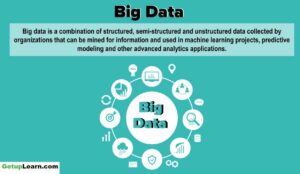
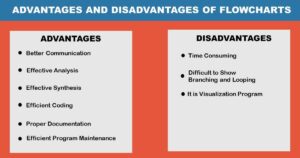
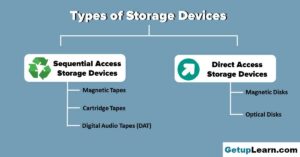
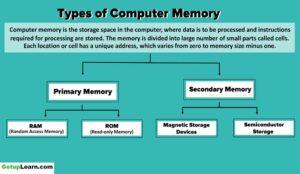


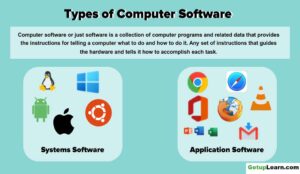


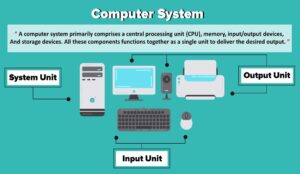
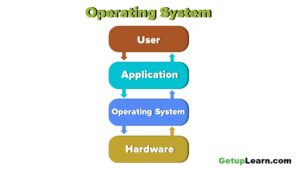
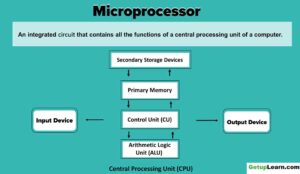
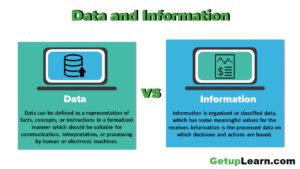


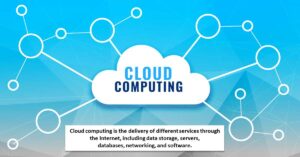

The notes are well stated
Thank you so much for visiting our site. I hope our content helped you.